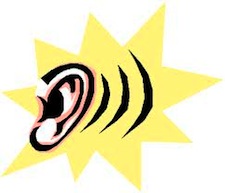It’s the time of year for saving money!
 Does every piece of gear have it’s own unique sonic
Does every piece of gear have it’s own unique sonic
signature? Logically, unless two components share a majority of the same parts
and technologies they should sound different from each other. During 40+ years
of listening to audio systems and doing A/B comparisons, occasionally I can’t discern
any sonic differences between two pieces of gear in a real-time matched-level
A/B test. Sometimes, when I’ve had a chance to live with both components for a
while, I’ve formed a sonic preference for one over the other. What’s that
about?
The most obvious
reason for not being able to hear a sonic difference between two components is
that the rest of the system doesn’t have sufficient resolving power to allow
the differences to pass through it. A
gross example of an opaque system is one of those early wireless FM
transmitters that had about a 20dB SN ratio due to the background hum. You
could connect a Levinson or a Lloyds to it; the sound wouldn’t change a bit,
and you sure couldn’t tell them apart.
Another reason for not hearing a difference is more subtle
– the nature of an A/B comparison – switching back and forth doesn’t give your
ear-brain enough time to discern the subtler aspects of a component’s
performance. You can only notice the grosser and more blatant differences in an
A/B test, while the equally important micro-details don’t factor into the
evaluation process.
In a perfect world every sound component’s sonic performance
would so far exceed human beings’ perceptual abilities that all components
would, indeed, sound identical. But we sure aren’t there yet.





